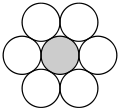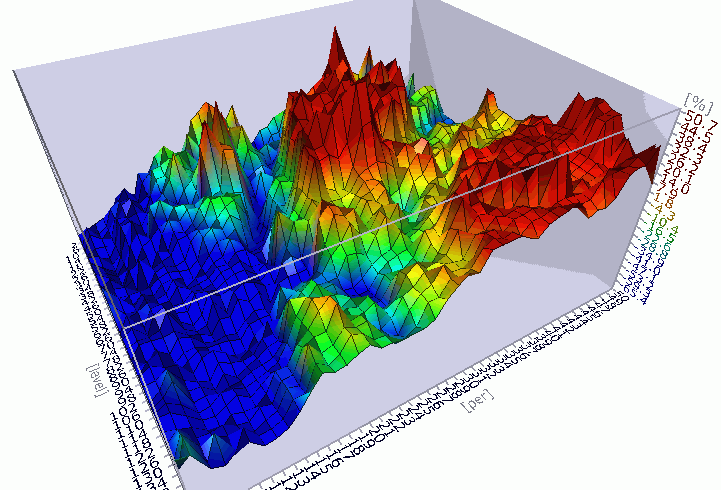Fortunately, someone in the break room had an appetite for science and technology. I'd find magazine issues of Science Digest, Popular Science, Popular Mechanics, and the occasional Aviation Week or Scientific American. An article caught my eye about a NASA proposal to send automated factories to the Moon to create fuel depots and piles of prefab construction materials for future colonies and missions. Not just automated factories, mind you, but self-replicating automated factories that would produce fuel depots and construction materials as more-or-less excreted afterthoughts.
The article referred to these self-replicating factories as "robot farms". (No doubt alluding to ant farms as an applicable association to get the self-replicating part across to the public). I thought about those robot farms whilst sweeping floors and burning trash through the summer months. In the spring semester just prior, I had taken classes in mathematical models and simulation, a FORTRAN programming class, and an interesting elective on microbiology. Not knowing a damned thing about the required machinery for robot farms, the conditions on the surface of the moon, the composition of the lunar regolith, or even the amount of programming required to make a robot farm self-sustaining, I decided to figure out the theoretical - the ballpark number - aspects of the endeavor.
I felt no need to investigate the actual specifics of the robot farm, but merely to treat it as a reproductive unit. To stick with the ant farm metaphor, one would assume there would be different castes of machines. A specialized worker caste, obviously, to stripmine and gather minerals, smelt and separate the valuable materials, process, assemble, and store basic components. Perhaps an intermediate network caste - railroad, conveyer belt, and radio or telephone robots to link, coordinate, and ship materials and information around (as will be seen later, this might be the most important caste). And then their would be the reproductive caste, that would further construct the necessary robots, as well as program them. At the time, I was not aware of John von Neumann's investigations into self-replicating phenomena, in either the form of cellular automata, or machinery, but basically, this was the gist of it.
And I assumed, since NASA was contemplating it, that plans for building these robot farms with materials available upon the Moon existed and were feasible (apparently, the robots would be mostly made of iron, titanium, and glass, based upon the composition of the lunar soil. Couple this with solar power - either as concentrated heat or converted electric, and your best bet is some type of silicon ecology). That NASA would use processes that could be used on the lunar surface (no carbon, no hydrogen, no water, but plenty of dust to gum things up, and sunshine, but also solar magnetic storms and flares and gamma and X- rays and things that really mess with electronics). So all NASA needed was to, well, shoot some big magical metal seed pod up there and get the whole enterprise to going.
As such, really, I just assumed the plans for the damned things would work out, and could concentrate on how - and how fast - they'd "grow". Treating one robot farm as a reproductive unit, a logical starting place was Fibonacci's rabbits. In 1202, Fibonacci thought about rabbit pairs producing. He assumed that they would take a certain amount of time to mature, and from then on out, they would breed. So, generation-wise, 1 pair would take time to mature, then produce another pair. The new pair takes a generation to mature, but the first pair continues to breed and makes another pair, and so you have 3 pairs. And then the first pair has another pair, and the now mature second pair breeds and has a pair, and now you have 5 pairs, and so on.
 |
| Fibonacci Rabbits |
When you add up the numbers, you'd produce the Fibonacci sequence, and they'd go like:
1, 1, 2, 3, 5, 8, 13, 21, 34, 55, 89, 144, 233, 377, 610, 987, 2584, 4181, 6765, 10946, 17711, 28657, 46368, 75025, 121393, 196418, 317811, 514229, 832040, 1346269,....
So, after 30 generations, there would be more than a million machine complexes on the Moon. Give them ten square miles territory each, and that's 13 million square miles of strip mined golden goodness. Keep in mind, the Moon's surface area is around 14 million square miles, that's something. Throw in some generation time number - a month or a year or even a decade, and the Moon is over run with machines and the material instrumentalities of human civilization in a very short time span, compared to its geologic life.
But, like the Drake Equation, these are all fairly silly and arbitrary numbers that don't really mean anything. First of all, notice that Fibonacci's rabbits are immortal. If rabbits die, that slows down the sequence some. For example, if a pair dies after, say, three generations, then the sequence is 1, 1, 2, 2, 3, 4, 5, 7, 9, 12, 16, etc.
 |
| Mother and Daughters |
In any case, I'd assume NASA would have some stop code in the reproductive stack for those geographic reasons. Not to mention the fact that the lunar surface will not be uniform in resources. Some areas will be a horn of plenty, others sparse and penurious, and the honeycomb will be anything but regular. Then there is the fact that machines break down, and if enough components, workers, assembler what have you, fail, the whole farm fails and dies. So, no, even in the most optimistic fantasy scenario would you see the Moon populated with a robot ecology in a year, or a decade, or a century.
 |
| Pen and Ink Robot Farm Simulation |
Hemp, or more accurately, herb, being the operative descriptor for this examination.
Another term that comes to mind would be Monte Carlo masturbation.
As is often the case with a general mathematical analysis, even a substandard one as this, no significant insights or profound revelations come from anything like this. (Indeed, my high school leanings towards numerical Platonism were completely quashed by investigations into higher mathematics. Once you realize that the best models are little better than toys, that empirical observations of the the thing itself is the best simulation of all, the maths quickly lose their shine. Mathematics may be more than just counting, but not much else).
 |
| Graph of a Logistic Equation |
Fortunately, there was that microbiology class I mentioned at the beginning of this essay to draws from. Interestingly, for an intro class, it was taught by a full professor. In retrospect, he was on his way out, towards retirement, had a few heretical ideas about evolution, and was therefore, relegated to the academic gulag. Still and all, he was a smart fucker, and he talked about things that only now are being considered.
Oh, sure, he presented the usual accepted canon of the Darwinian fundamentalists, with the singular gene and in sole and supreme primacy for inheritance, and yet the old guy also talked of how often singular microbes talked to each other - through shared RNA rings, diffusible molecules, proteins, and peptides and who knows all what else. The amount of chatter at the cellular level - quorum sensing, eavesdropping on competitors, synchronizing with collaborators, not only between members of the same species, but also across species, is really quite astounding, and probably a trillionfold-plus the amount of electromagnetic chatter we humans engage in. Not to mention things like biofilms, which seem to serve all sorts of mysterious multicellular purposes. Teams of things, groups of things, were far more interesting and compelling area of study. The old prof was not quite ready to commit to Lamarckian mechanism or teleological impetus, but there was clearly some sort of purpose to all this.
It wasn't until my return to college that I got to spend time in the computer lab to run simulations. The problem is, I really didn't know what I wanted to simulate, or even what the equations would look like to do it. As Richard Hamming famously said "Many a physicist has gotten the right number with the wrong equation". Multiply that sage observation for "wrong mathematical model". I had experienced this in my prior spring semester's "Mathematical Models and Simulations" when I was assigned to replicate the population model of a simple marine ecosystem with the Lotka-Volterra equations - only to find that these equations did not accurately model the ecosystem. (The "prey" adults ate the "predator" babies, and thus a key coupled feedback parameter was lacking from the equations).
 |
| Way too many hours wasted on this shit |
I would have to turn to discrete structures, combinatorics and graph theory for the answers I wanted. Late night computing ended up being all about hemp-flavored Star Trek games on terminals connected to the mainframe computer.
Suffice to say, I was never quite up to the task, but what I lacked in quantitative analysis I made up for in qualitative, and a judicious use of highly unscientific inductive thing.
Long story short, it came down to this. A networked system of robot farms would look a lot less like a superorganism of an ant colony, or for that matter, the loosely linked organism of a sponge or a jellyfish, and a lot more like a multicellular organism of an animal, or actually, more like a... nervous system. Yeah. Like a brain. And that sent a little thrill of fear through me the first time I thought of it, I can tell that much.
 |
| Herr Gauss's Bell |
It's only lately that I've found the term I didn't have back then to describe what I saw in head. Here's bascially what I saw. A robot ecology up on the stark surface of the Moon slowly and painfully gains a small foothold. Over time, all the little components, working together, working along a code that NASA wisely saw fit to allow to self-optimize, talking to each other about hazards and bonanzas, mileposts, and breakthroughs and setbacks, for the longest time is a small silicon ecology, and then, with a sudden effloresence, blossoms and blooms into... something else entirely. And it, this event, though I did not know it then, I would now call a technological or Vingean singularity. The difference, though, and this is important, is that whereas Vinge and his predecessors relied upon some type of intelligence to see it through, I saw that this particular disruptive event would require no Intelligent Design. It was all strictly through ratcheted happenstance.
And the other term I was lacking? To describe this world-changing paroxysm?
I have finally have a term for it, it would be a Dragon-King Event.
All my silly reductive analysis would not have caught any of it: "By cutting the mammoth in pieces, we observe only mice".














